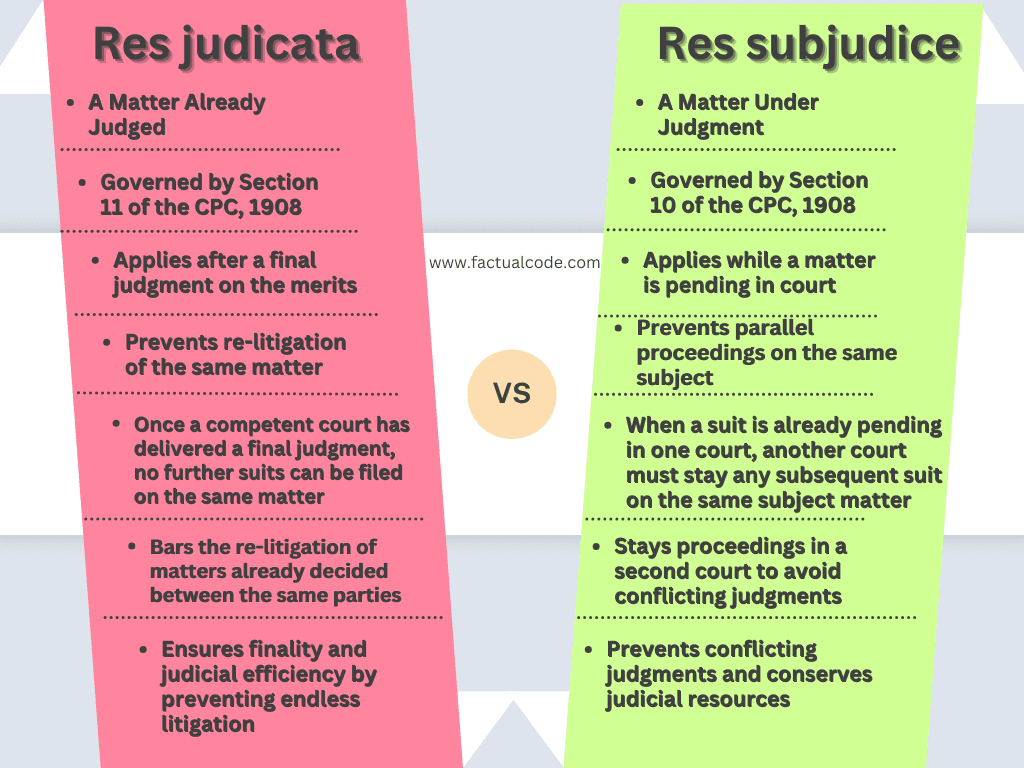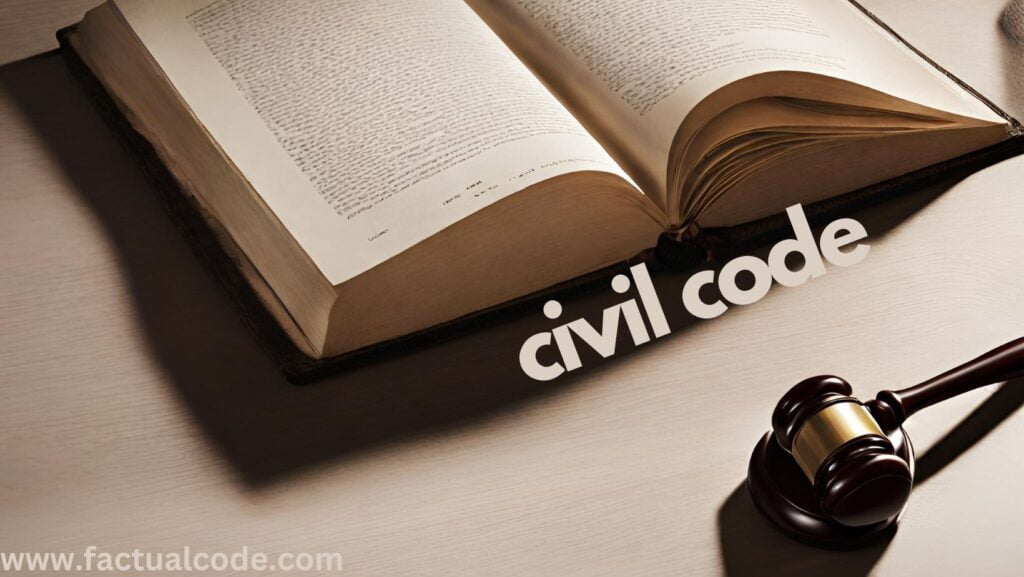Introduction
The legal principles of Res Judicata and Res Sub Judice play a pivotal role in civil law, ensuring judicial efficiency and minimizing the burden on courts. While both doctrines aim to prevent unnecessary and conflicting litigation, their application varies based on timing and scope. This article delves into the concept of res judicata, supplemented with landmark case laws, and provides a clear distinction betw+een res judicata and res sub judice as defined under the Code of Civil Procedure (CPC), 1908.
Elucidation of Res Judicata with Case Laws
Res Judicata, a Latin term meaning “a matter already judged,” is codified under Section 11 of the CPC, 1908. This doctrine prohibits re-litigation of issues that have already been decided by a competent court. Once a final judgment has been delivered, parties are barred from reopening the same matter in subsequent proceedings.
Objective
The primary objectives of res judicata are:
- To uphold the finality of judgments,
- To promote judicial efficiency,
- To prevent harassment through repetitive litigation, and
- To conserve judicial resources.
Key Essentials of Res Judicata
- Same Parties: The doctrine applies when the same parties (or their legal representatives) are involved in both the previous and current litigation.
- Same Subject Matter: The matter in dispute must be substantially identical.
- Competent Court: The prior judgment must have been passed by a court with competent jurisdiction.
- Final Decision: The earlier judgment must be a final decision on the merits of the case.
Landmark Case Laws
Daryao v. State of UP (1961):
The Supreme Court held that res judicata applies to writ petitions. In this case, petitioners were barred from filing a fresh writ petition in the Supreme Court after a similar petition had been dismissed by the High Court. Allowing re-litigation would undermine the judicial process.Satyadhyan Ghosal v. Smt. Deorajin Debi (AIR 1960 SC 941):
The court emphasized the principle of constructive res judicata, stating that not only the issues decided but also those that could have been raised in the earlier suit are barred from being litigated again.Mangal Singh v. Rattno (1967):
This case highlighted that res judicata prevents parties from splitting claims into multiple suits, covering points that were decided or should have been raised in the earlier litigation.Mohammad S. Laiquiddin v. Kamala Devi Misra (2010):
The Supreme Court applied res judicata to execution proceedings, holding that issues resolved in one execution proceeding cannot be reopened in subsequent ones. This case reinforces judicial finality.
Recommended Post
How To Read CPC (Code Of Civil Procedure, 1908)?Difference Between Res Judicata and Res Sub Judice in CPC
Though both doctrines aim to prevent multiplicity of proceedings, they differ in terms of timing and effect. Here’s a breakdown of the two:

1. Res Judicata (Section 11, CPC)
- Definition: Res judicata applies after a final judgment has been delivered.
- Objective: To prevent re-litigation of issues already decided, ensuring closure of disputes.
- Key Feature: Bars issues that were or could have been decided in an earlier suit.
- Example: If a property ownership dispute is decided by a competent court, the same issue cannot be reopened.
2. Res Sub Judice (Section 10, CPC)
- Definition: Res sub judice applies while a matter is still pending in one court.
- Objective: To avoid simultaneous proceedings on the same issue in multiple courts, preventing conflicting judgments.
- Key Feature: Stays proceedings in the second court until the first court delivers its judgment.
- Example: If two suits are filed on the same subject in different courts, the second court must wait until the first court resolves the issue.
Conclusion
The doctrines of Res Judicata and Res Sub Judice are indispensable for maintaining judicial discipline and ensuring fairness in the legal system. While res judicata emphasizes finality and bars re-litigation, res sub judice prevents conflicting judgments by staying parallel proceedings. Together, these doctrines reinforce the principles of judicial economy, consistency, and justice, ensuring that litigation is neither redundant nor endless.
🔗 Recommended Reading
Reference- Section 11 Section 10 Daryao vs State of UP Satyadhyan Ghosal And Others vs Sm. Deorajin Debi And Another on 20 April, 1960 Mangal Singh & Ors vs Shrimati Rattno & Anr on 6 April, 1967 Mohd. Laiquiddin & Anr vs Kamala Devi Misra (Dead) By Lrs. & Ors on 5 January, 2010 THE CODE OF CIVIL PROCEDURE, 1908

